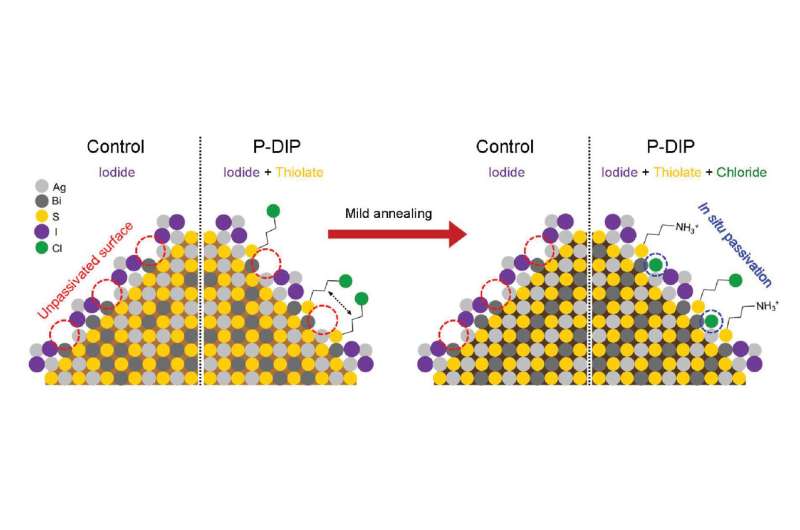In the era of climate change, renewable energies have quickly gained popularity, with solar cells being a prominent example of this shift. For instance, in 2023, installed solar photovoltaic power increased by 28% in Spain compared to the previous year, accounting for 20.3% of Spain’s total energy generation pool, a trend that is similarly mirrored in most Western countries.
Despite their commercialization and their unquestionable environmental benefits, solar cells still have room for improvement, as they are usually based on materials that are not fully sustainable.
Ubiquitous solar harvesting—beyond solar farms—is considered the way to go to power buildings, infrastructures, IoT systems or even vehicles. That would require light-weight, low cost, flexible and eco-friendly based solar cell technology.
The scientific community is thus directing its efforts toward finding sustainable alternatives that preserve (or even boost) electricity generation efficiency, reduce costs and simplify the manufacturing efforts of current solar cells.
One promising material that has emerged as an environmentally friendly alternative is colloidal silver bismuth sulfide (AgBiS2) nanocrystal, a material that is characterized by an extremely high absorption coefficient and thus leads to ultra-thin-film absorbers for solar cells.
Through a layer-by-layer manufacturing process, solar cells with compelling performance have already been reported. But to minimize material loss, reduce costs and improve manufacturing scalability, the multi-step deposition method must be replaced by a single-step approach.
This can be realized by developing AgBiS2 nanocrystal inks. Since 2020, several research studies have been reported. However, the resulting AgBiS2 nanocrystals have still exhibited significant surface defects accompanied by low power conversion efficiency in a solar cell, meaning that the techniques aimed at eliminating them -called surface passivation- were not sufficiently effective.
The remaining surface defects trapped the electrical charge carriers generated by sunlight and triggered their recombination, reducing the device efficiency to lower levels than those achieved with a layer-by-layer manufacturing procedure.
Therefore, a simpler yet more effective passivation methodology for AgBiS2 nanocrystal ink is needed to bring the efficiency of eco-friendly solar cells closer to competitive levels.

Recently, ICFO researchers, Dr. Jae Taek Oh, Dr. Yongjie Wang, Dr. Carmelita Rodà, Dr. Debranjan Mandal, Dr. Gaurav Kumar, Dr. Guy Luke Whitworth, led by ICREA Prof. Gerasimos Konstantatos, have taken a significant step forward in this direction. In an Energy & Environmental Science article, they have reported on a post-deposition in situ passivation (P-DIP) strategy that improves surface passivation, yielding nanocrystal ink films with enhanced optoelectronic properties.
The resulting ultrathin solar cells showed higher power conversion efficiency than their multi-step deposition counterparts, setting a new performance record for eco-friendly nanocrystal solar cells.
Post-deposition in situ passivation for improved surface passivation
ICFO researchers managed to effectively passivate surface defects present in their nanocrystal ink film. “Imagine a bumpy road that slows down cars. Surface passivation is like repaving the road, making it smoother so cars can move without getting stuck.
“In our case, the removal of surface defects is very important to facilitate the transportation of charge carriers created from light absorption in nanocrystal films,” explains Dr. Jae Taek Oh, first author of the article. “With our P-DIP method, charge carries could move without ‘bumping into so many obstacles’ within the AgBiS2 nanocrystals thin film,” he adds.
The mitigation of defects by a proper passivation strategy translated into higher film quality and, thus, higher performance solar cells. Their efficiency of around 10% exceeded that of previous solar cells based on AgBiS2 nanocrystals, involving both single-step and layer-by-layer deposition methods.
To obtain these outstanding results, the team synthesized the AgBiS2 nanocrystal ink by introducing a multifunctional molecular agent containing chlorine. Its molecular structure helped stabilize the nanocrystals and disperse them evenly within the solution, two crucial factors to ensure smooth coatings.
After depositing the film, the researchers carried out additional passivation on the surfaces of AgBiS2 nanocrystals. This particular in situ passivation strategy extended the carrier lifetime and balanced carrier transport in the film, which are also critical aspects to enhancing the efficiency of solar cells.
The combination of these effects was the perfect recipe to achieve the unprecedented performance for sustainable solar cells that ICFO researchers have demonstrated in this study.
More information:
Jae Taek Oh et al, Post-deposition in situ passivation of AgBiS2 nanocrystal inks for high-efficiency ultra-thin solar cells, Energy & Environmental Science (2024). DOI: 10.1039/D4EE03266G
Citation:
New performance record for eco-friendly nanocrystal solar cells (2024, October 24)
retrieved 24 October 2024
from https://techxplore.com/news/2024-10-eco-friendly-nanocrystal-solar-cells.html
This document is subject to copyright. Apart from any fair dealing for the purpose of private study or research, no
part may be reproduced without the written permission. The content is provided for information purposes only.

